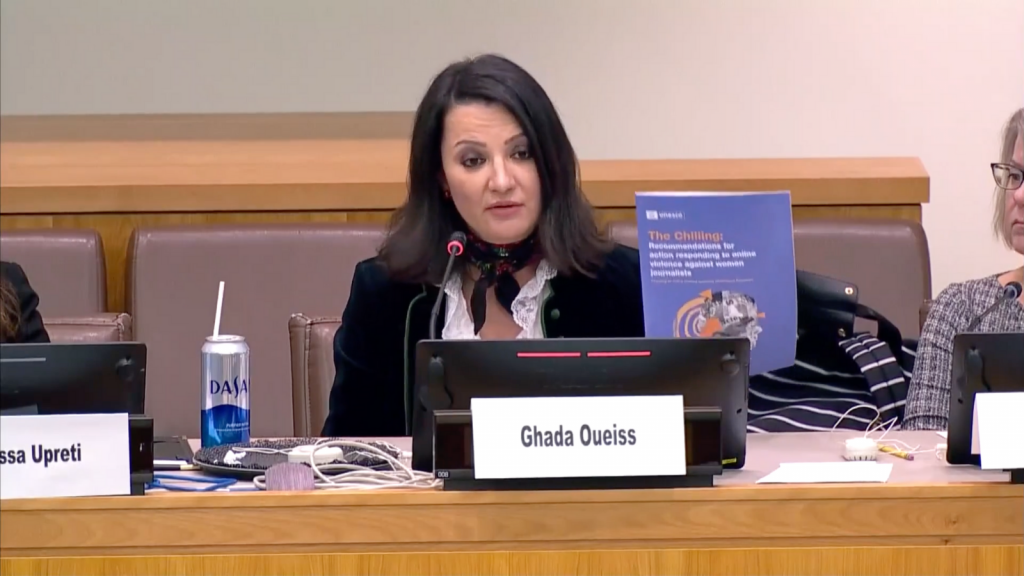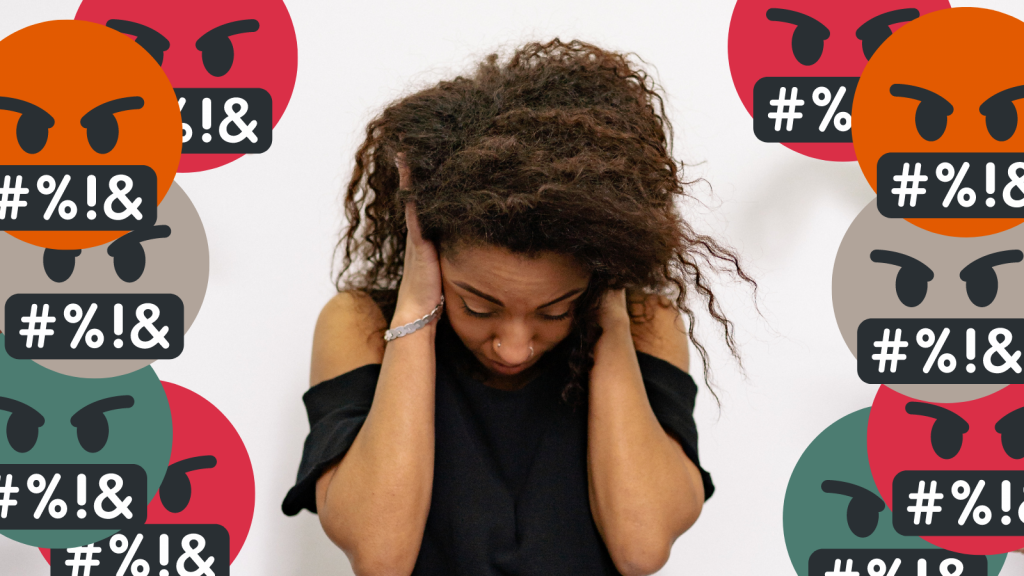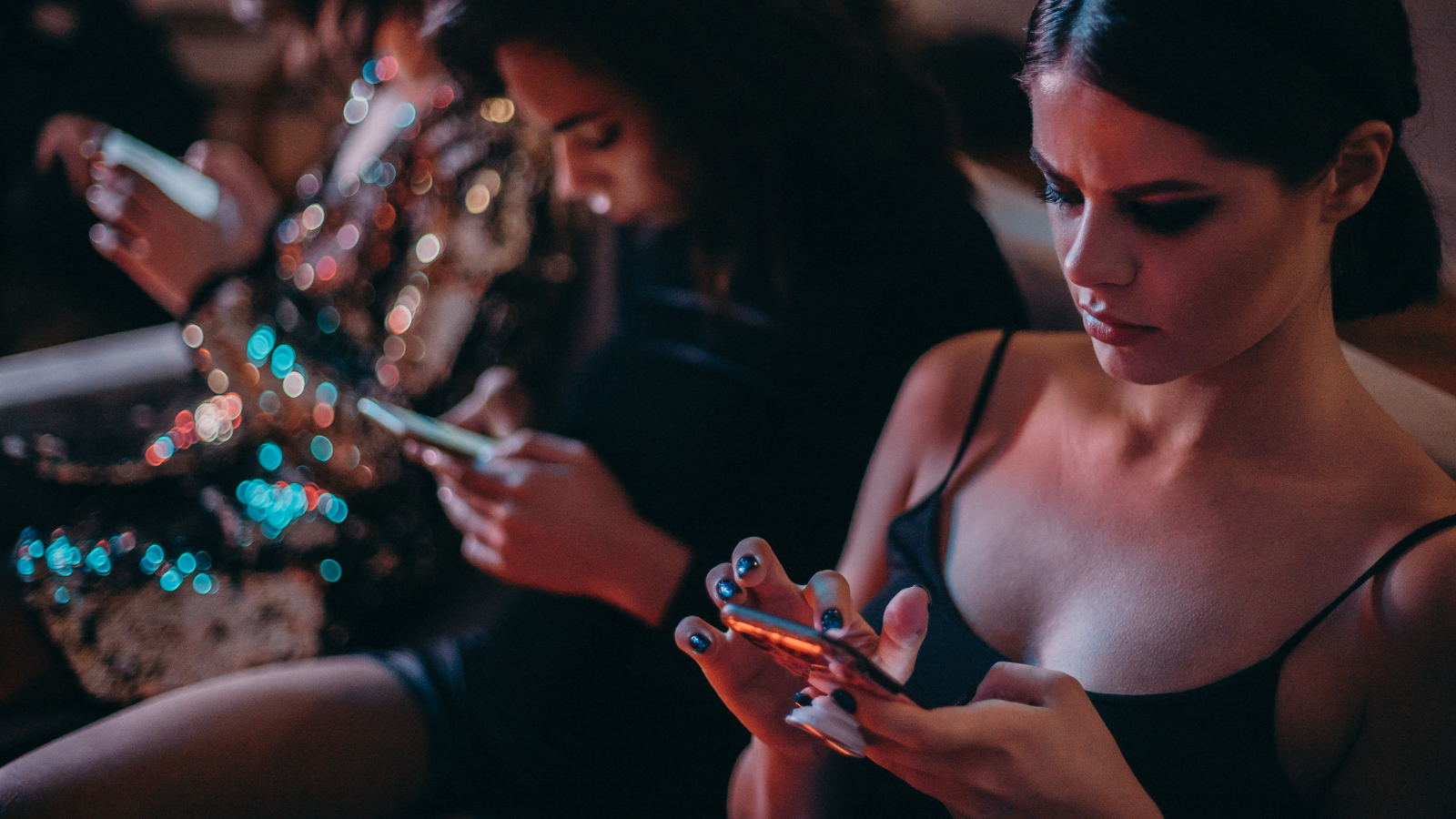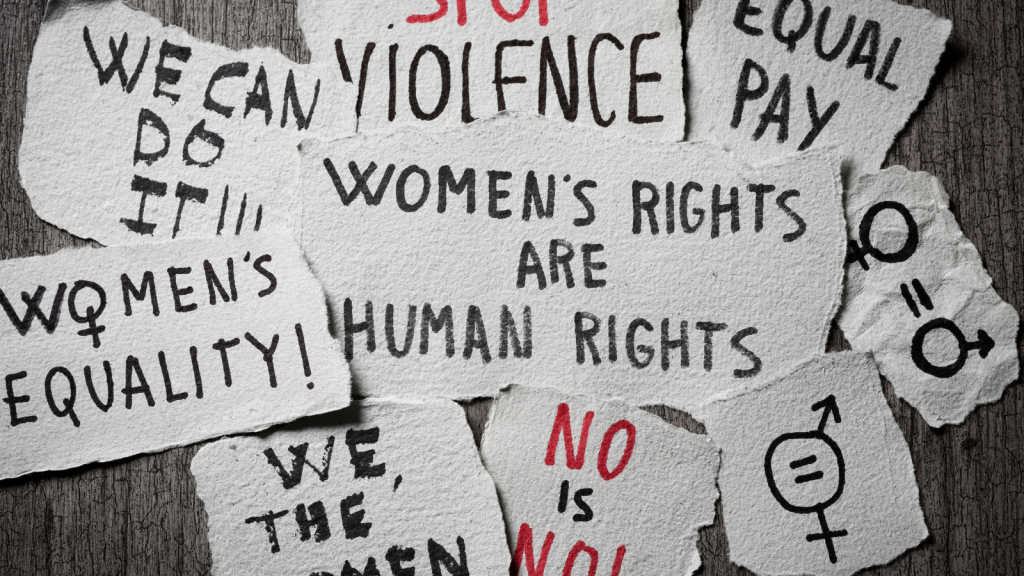“I think we still live in a man’s world,” said journalist Ghada Oueiss, a broadcast journalist who anchors political programs on Al Jazeera Arabic, and who became a case study of gendered disinformation after being the victim of massive sexualized trolling for her critical reporting on Saudi Arabia and the United Arab Emirates.
Oueiss’ private photos, which she never posted, somehow ended up on Twitter, showing her in a swimsuit and calling her a prostitute, among other names. The International Center for Journalists and the Story Killers Project analyzed data on the attacks against Oueiss and found that 34% of posts against her were “sexist, misogynistic, or sexually explicit”, while 47% attacked her credibility as a journalist.

What happened to Oueiss was gendered disinformation, a trend over the years that saw targeted attacks on women, particularly those of influence like journalists, politicians, or activists. According to UN Women, 73% of women journalists and 58% of women parliamentarians are victims of online attacks.
“I did not expect to become the story. I think we still live in a man’s world where gender equality is not respected – they took the sexual route because of misogyny. It is classic and it’s a typical cowardly authoritarian corrupted patriarchal system,” said Oueiss, who received a standing ovation when she spoke of her experience at the recently concluded 67th session of the Commission on the Status of Women (CSW67).
Gendered disinformation has one goal: to silence the outspoken woman.
“The experience of the women who go through this has an impact on the next generation and that is the next generation of girls who are watching outspoken women and leaders get destroyed online,” said Onica N. Makwakwa, executive director for policy and programs of the Global Digital Inclusion Partnership (GDIP).
Will the men stand up?
As women get battered online, the male-dominated boardrooms of tech companies have done little to help, according to Melissa Upreti of the United Nations working group on discrimination against women and girls.
“Our latest position paper [is] on the topic of men’s accountability for gender equality, in which we have noted the predominance of online violence and misogynist hate that is practically uncensored and largely ignored by tech companies and policymakers, which are also predominantly male,” said Upreti at a side event of CSW67.
Oueiss said she “felt totally abandoned” by the platforms who “ignored my messages.”
“Twitter did zero effort, and it is getting uglier with the [Elon] Musk era. Twitter encourages dictators, trolls and bots to try to silence women and girls and female journalists or activists,” said Oueiss.
“I think the big problem is that we are wanting to look at online gender-based violence as unique, because it’s just online, but the reality of it is, fundamentally, this is about patriarchy, inequality and misogyny, that happens both offline and online,” said Makwakwa.
‘Secret ingredient to patriarchy’
In the last 11 years, the number of women hired into technology companies has remained “the same in internship level and entry-level,” said Alessandra Sala, a leading data scientist and president of Women in AI, at the CSW67 side event on gender digital revolution.
Dr. Phumzile Mlambo-Ngcuka, South Africa’s former deputy president, said that in the eight years that she was executive director of UN Women, she saw that women employees have “often been treated as a corporate social investment (CSI) intervention by companies and not a core business and human rights imperative.”
“The mostly’ man in charge’ stool has to be engaged even more and be held accountable for the desired change in their companies,” said Mlambo-Ngcuka, adding that customers of these companies must lead the demand to a more gender-balanced workforce.
Having more men in a technology company contributes to the gender bias of artificial intelligence (AI) systems. A global analysis of 133 AI systems across industries found that 44% demonstrate gender bias, according to UN Women.
An investigation by The Guardian analyzed images posted on social media and found that AI algorithms rated images that feature women’s bodies as sexually suggestive or explicit, even though they are photos, for example, of medical websites showing how to do a breast examination. The same AI systems were not rating images of men in the same way. As a result, the probe showed that AI is suppressing and censoring these contents of women, meaning that you would likely see more images of men of the same content than you would of women on your feed.

When Renata Avila, an international human rights lawyer specializing in digital rights, asked ChatGPT about the leaders of an industry, the results came back with only men on the list.
Avila said that not only are males creating the datasets fed into the systems, even humanity’s formally recorded knowledge has excluded women.
“It’s the secret ingredient of patriarchy because it programs us. The current system of AI is a reflection of a failed knowledge system, a failure by design [because the] knowledge system forgot to include us,” said Avila, the CEO of Open Knowledge Foundation.
Going back to the drawing board
Avila said that the digital gender gap, and the online gender-based violence that comes along with it, is a product of “a broken design,” and it’s a problem that cannot be fixed by technology alone.
It takes huge investments and financing to elevate the digital skills of women, so they don’t only apply for jobs in technology companies, but that they actually stay and become leaders themselves. It’s a massive task given the systemic inequality that keeps women from not only connecting, but from connecting meaningfully.
“The social network part of it is a system of data extractivism, exploitation, and expropriation that does not belong to feminist principles. We use it because there are some practical advantages to them, but instead of copying and cloning the broken model, what we need is to design from scratch, and advance the purpose of gender equal version of communication and information systems of technologies,” said Avila.

“This is a full-time challenge that requires expertise and resilience for meaningful change to be a reality,” said Mlambo-Ngcuka, adding that “we need men, and women, and organizations who care to stand up in defense.”
The movement to close the gender gap in the digital space is likely going to produce more feminist declarations. That, and the focus on men’s accountability, may antagonize the men whose influence and power are needed to make some changes, but Makwakwa said that women cannot afford “to dilute our agenda.”
“There’s also a concerning tendency to push back against even the term feminism, which for me is quite alarming and something we need to be careful about, that we should not be bullied into eliminating the use of the term feminism,” said Makwakwa.
“We cannot afford to dilute our agenda just based on terminology, because at the core of this is just women being equal to men, equal access and opportunities as their counterparts,” said Makwakwa.
This story was produced in partnership with Rappler.com.
About GDIP
The Global Digital Inclusion Partnership is a coalition of public, private, and civil society organizations working to bring internet connectivity to the global majority and ensure everyone is meaningfully connected by 2030. GDIP advances digital opportunities to empower and support people’s lives and agency, leading to inclusive digital societies.


